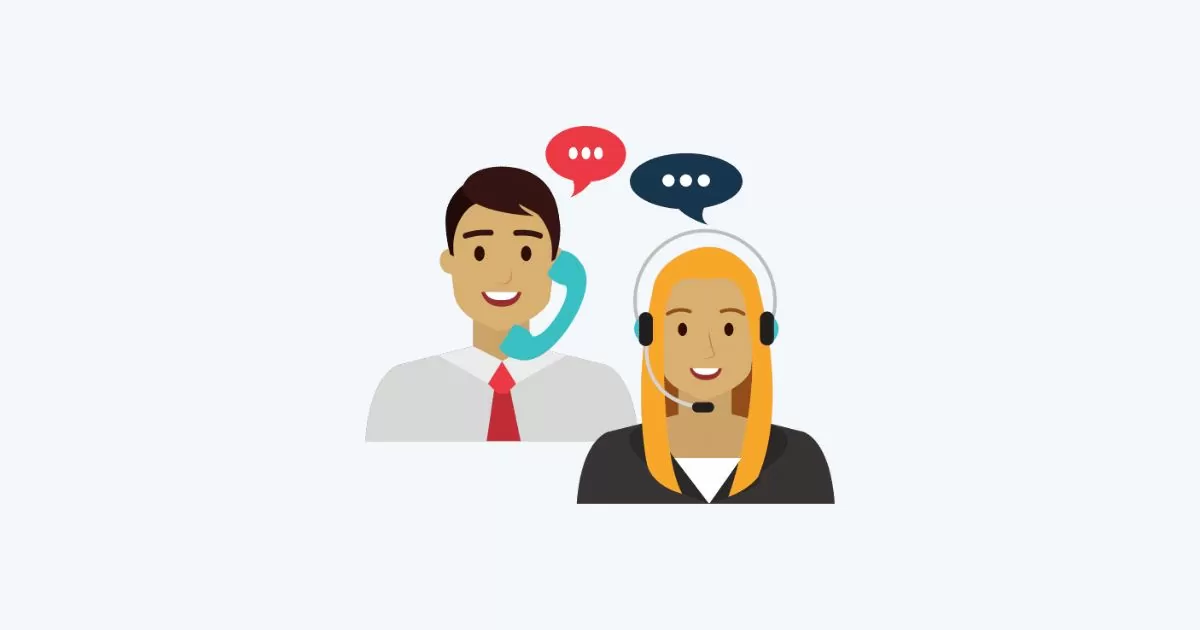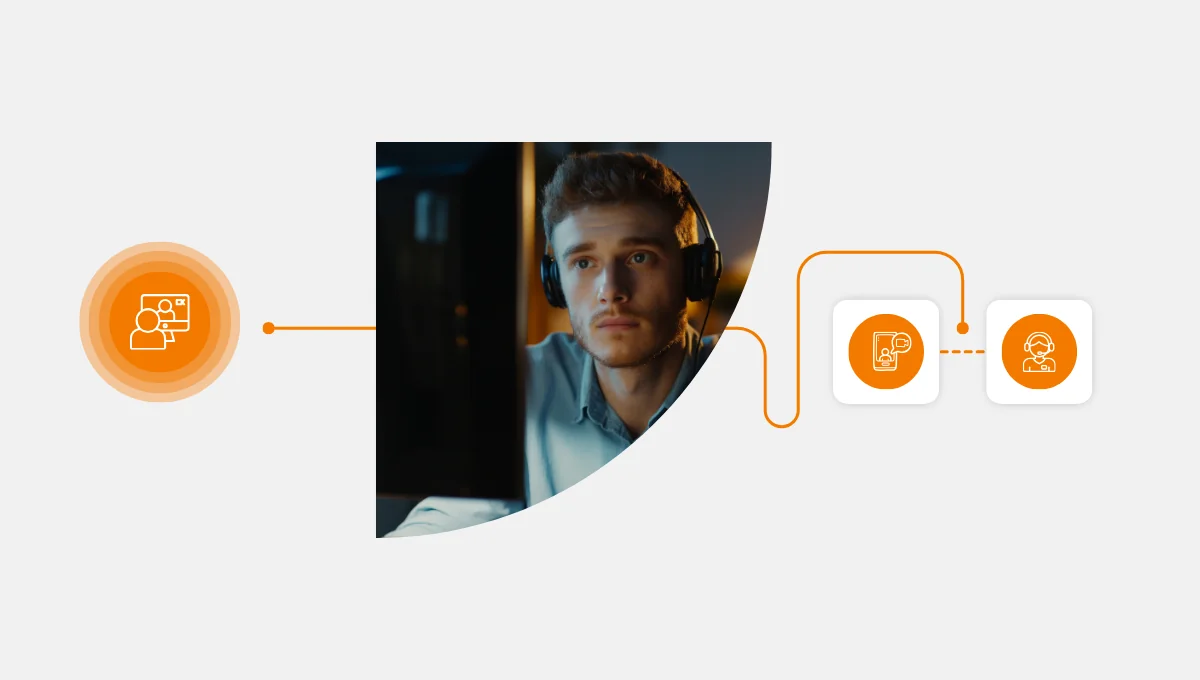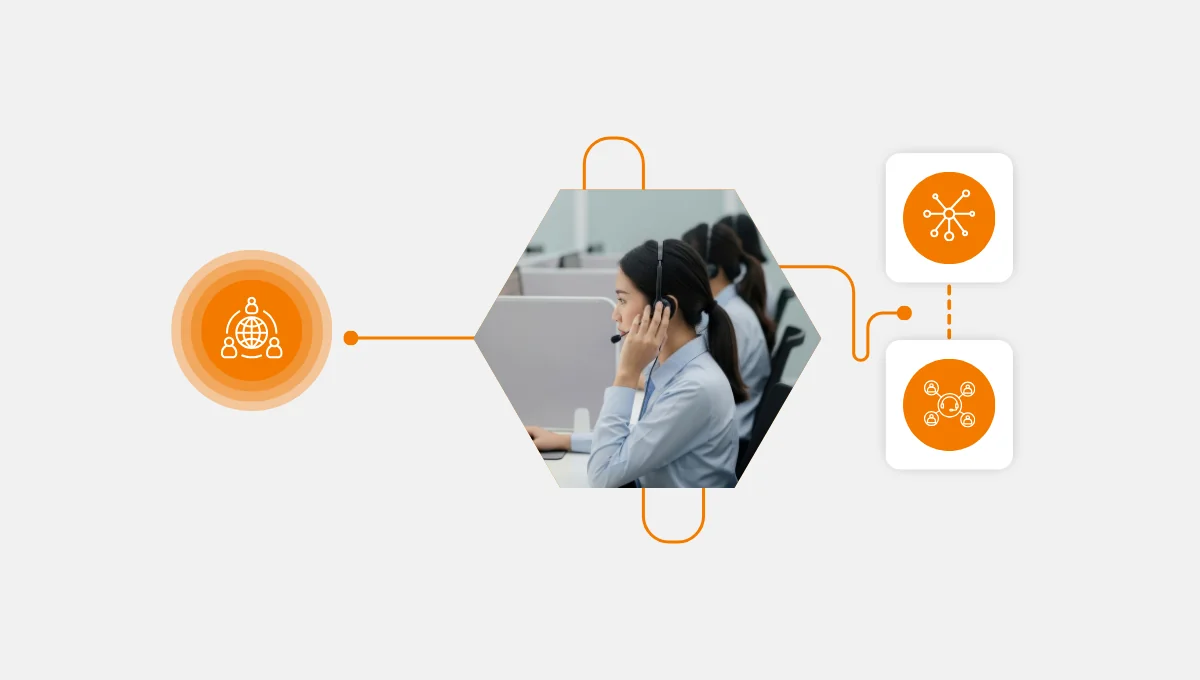Call center productivity is an estimate that reveals how effectively your call center operates, considering resources like labor, time, and technology. It often depends on at these two factors:
- Agent motivation – this involves the human factor. Unmotivated workers sometimes perform their jobs mechanically and to the minimum. In contrast, motivated call center agents proactively make suggestions to improve processes and are willing to admit to the mistakes they have made. Motivation increases agent productivity.
- Tools and environment – this involves the technology factor. Technology is one of the most prominent aspects that can hamper or uplift call center productivity.
An easy formula to calculate call center productivity is total output/total input multiplied by 100. This method works well for obtaining a quick snapshot of how your center is doing but not for plowing so much more profoundly. If you are looking for specifics, setting up the right consumer service metrics for your organization is the best option.
The best consumer service metrics are the ones that help you quickly identify your cloud call center’s weak points so that you have a quick fix. You may also consider investing in a cloud contact center, since it is feature-rich customer support. This helps you because it is a customer support dashboard that treats customers like people. You can also use call center metrics to better understand consumers’ satisfaction with your customer services, as well as track agent performance metrics to get a comprehensive image of call center performance. Are you looking for the best contact call center? Then worry not because the Call Center Studio is there for you, and it is the world’s first contact center built on the Google to deliver the best experiences. Below are several metrics to get you started measuring call center productivity.

Consumer Satisfaction Score
The customer satisfaction score (rating scale from 1 to 5) comes from a survey sent to customers following their call with an agent. Customers rate how satisfied they are with the service the agent offers. The customer satisfaction score is valuable since it is a subjective consumer score. This sets a premium on how the shareholders think about the agents offering. You should ensure that it is rated high because a high customer satisfaction score primarily means that your agents in the office are doing a great job in delivering resolutions. This can be calculated by dividing the figure of satisfied consumers by the figure of consumers who answered the survey, then multiplying this figure by 100.
Missed Calls
This refers to all unanswered calls or missed calls, which can be due to any of the following reasons:
- Consumer calls lose interest while waiting for the call to be answered and hang up before an agent gets to answer the call from the customer.
- The consumer is put on hold, or they are placed in a queue. During the waiting process, they hang up.
- When your voicemail comes on but the consumer does not leave any message.
85% of customers whose calls are left unanswered won’t call back, so of course, you want to keep your missed call rates low. If this rate is high in your company, you should consider optimizing your process, upgrading your tools, hiring extra in-house agents, or outsourcing the team. You can calculate this by dividing the abandoned calls by the total number of incoming calls and multiplying this figure by 100.

The Standard Call Duration
The average call duration is calculated by dividing all of the calls’ total billable time by the total number of calls. They can help verify patterns or trends like common reasons for long calls or peak times.
The Response Time
Response time is one of the best metrics for measuring and understanding agent productivity. This calculates the average time before an agent picks up the call. If this metric is high, then your agents are not meeting their targets, and consumers are waiting too long on hold. When the average time on hold is too long for consumers, their interactions with agents start negatively, often resulting in an overall negative consumer journey from start to end.
However, it is good to find out what’s hindering agents from responding to customer calls faster. Make sure you ask questions, listen, and review agent tickets so that it guides you more. Not all customers are willing to talk to the customer support team, as many want their issues solved through online self-service options. However, contact center training is still needed in call centers to enhance handling of the customers who do call. These changes can be simple, such as introducing improved work tools and adding consumer service training, which will help you reduce average response time.
First-Call Intention Rate
The first-call intention rate is the total percentage of consumer requests set during the first call. The first call resolution is calculated by dividing the number of settled requests during the first call by the total number of calls. A high first-call resolution demonstrates that your consumers are getting their issues resolved efficiently and quickly and naturally, consumers are happier if their issues are determined in one call.
Takeaway
In a call center context, all the input can be your call center agents, and your output is the weekly number of resolved support tickets. It is crucial to continuously monitor the information across every mode of consumer interaction and keep your agents informed to satisfy your customers. Keep in mind that every customer needs the best service – always.




